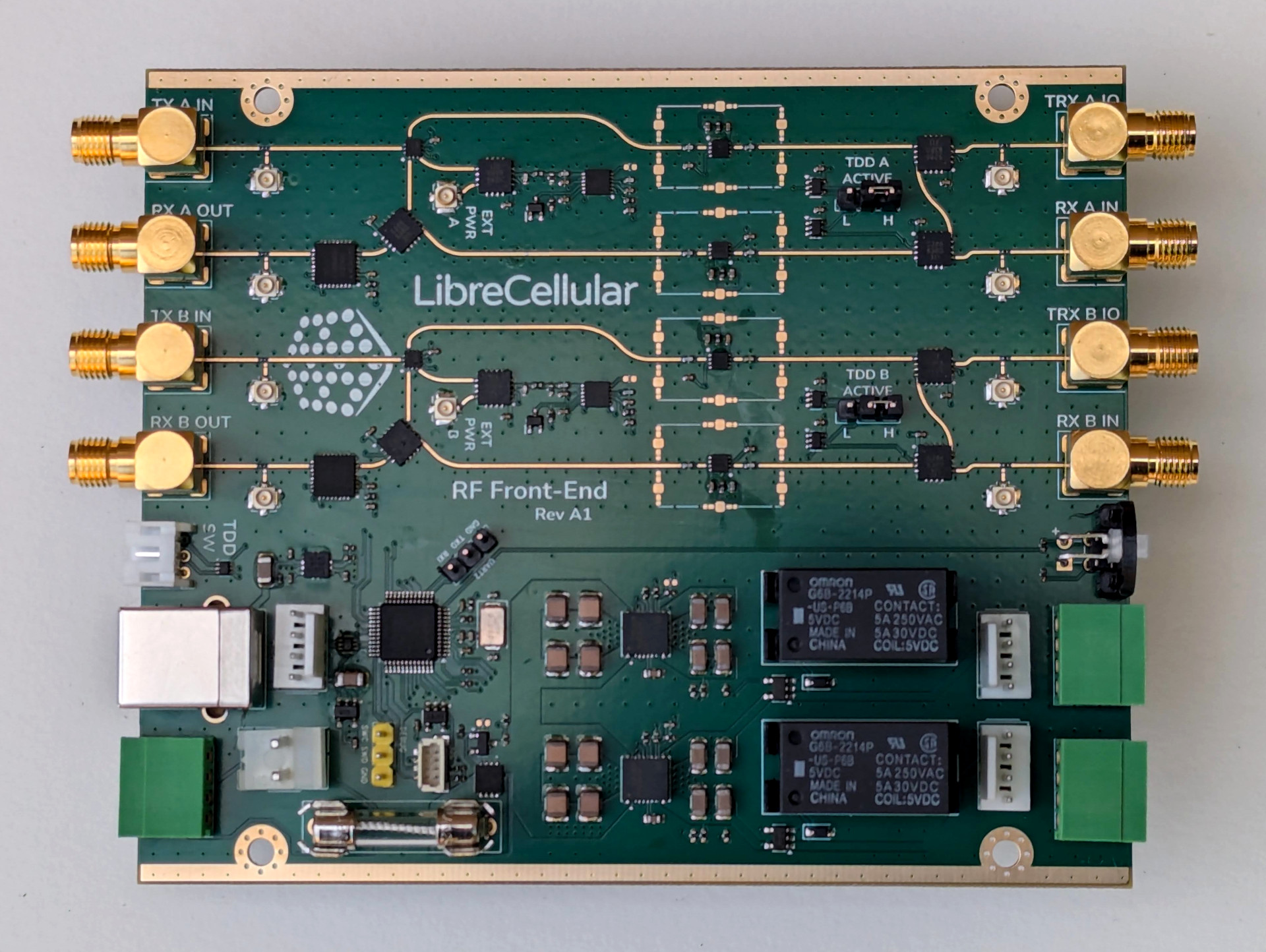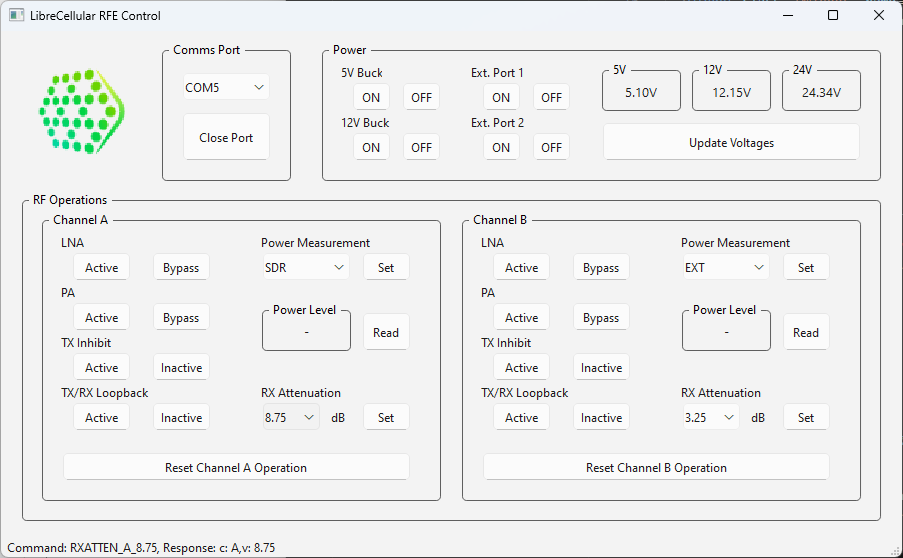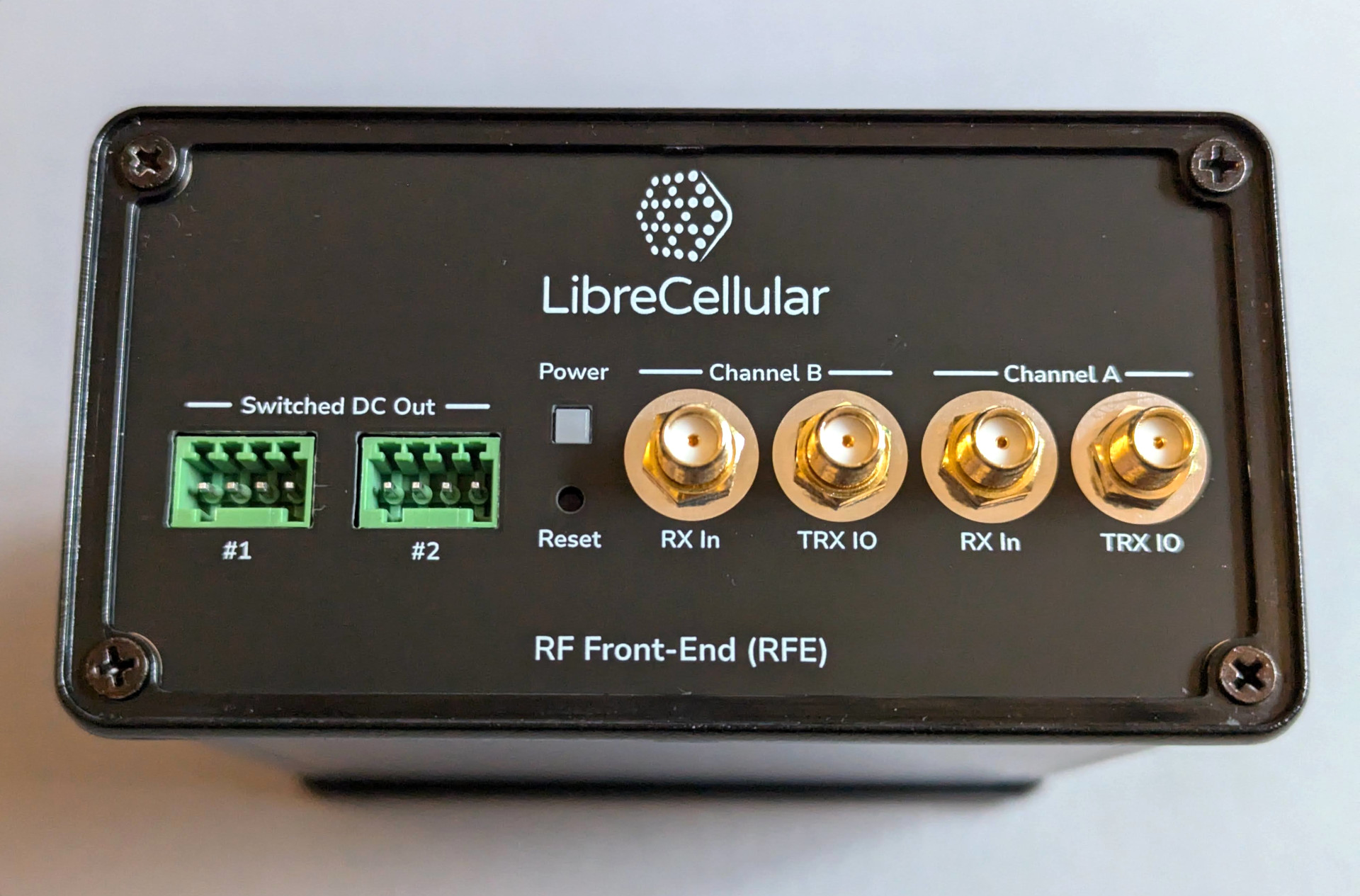LibreCellular srsRAN 4G fork updated and new RF Front-End hardware.
The srsRAN 4G fork with native LimeSDR hardware support has received a long overdue update, and a new RF front-end has been developed which provides a highly convenient solution for those building base stations, both of the small cell and wider coverage type.
srsRAN 4G 23.11 LC01
The LibreCellular srsRAN 4G fork which integrates native support for LimeSDR hardware has been rebased on the upstream 23.11 release, with packages for Ubuntu 22.04 LTS now available via the LibreCellular PPA. Once Lime Suite packages are available for Ubuntu 24.04 — which should be following the next release of the “classic” Lime Suite codebase — srsRAN 4G 23.11 LC01 packages will also be made available via the PPA for the new Ubuntu LTS release.
As this is the first update since the upstream 22.04 release, it incorporates numerous fixes and enhancements. See the CHANGELOG file for details.
Work is also underway to implement a driver for Lime Suite NG, which will provide support for recent hardware, such as LimeSDR XTRX, along with support for numerous new features, which owners of LimeSDR Mini v1 & v2, plus LimeSDR USB, will also be able to benefit from.
Versatile 2×2 RF Front-End
 We’ve been busy these past months working on a new hardware design for use in deployments, a highly versatile RF front-end (RFE). This is designed to be connected to an SDR and provides uplink and downlink amplification, thereby enabling greater coverage. The RFE supports up to 2×2 MIMO (2x transmit plus 2x receive signal paths) and can be used with both FDD and TDD operation. The selected Qorvo amplifiers have a specified frequency range of 500MHz – 4GHz, with a gain of 19 dB and a P1dB of 21.2 dBm. However, the RFE has yet to be fully characterised to determine the insertion loss and performance across the full frequency range, with reduced performance expected at higher frequencies due to the low cost FR4 PCB substrate used.
We’ve been busy these past months working on a new hardware design for use in deployments, a highly versatile RF front-end (RFE). This is designed to be connected to an SDR and provides uplink and downlink amplification, thereby enabling greater coverage. The RFE supports up to 2×2 MIMO (2x transmit plus 2x receive signal paths) and can be used with both FDD and TDD operation. The selected Qorvo amplifiers have a specified frequency range of 500MHz – 4GHz, with a gain of 19 dB and a P1dB of 21.2 dBm. However, the RFE has yet to be fully characterised to determine the insertion loss and performance across the full frequency range, with reduced performance expected at higher frequencies due to the low cost FR4 PCB substrate used.
For small cell type applications the RFE can be used with the addition of only a band-specific duplexer (FDD) or filter (TDD). While for covering larger areas it may be used with external RF power amplifiers and here the RFE will act as an RF driver in the downlink path.
Additional convenient features include power sequencing of external PAs, programmable step attenuators in the uplink (receive) path, RF power measurement, and transmit/receive RF loopback.
 The RFE integrates an STM32 MCU for control and is configured and powered via USB. An additional power input of 12-28 VDC can be supplied when using external RF power amplifiers, with the RFE then also providing 5 and 12 VDC regulated outputs, and switching all three rails — these plus the 12-28 VDC input — to connected PAs and under USB control. The MCU firmware has been developed in C and a Python GUI is available for use on the connected host.
The RFE integrates an STM32 MCU for control and is configured and powered via USB. An additional power input of 12-28 VDC can be supplied when using external RF power amplifiers, with the RFE then also providing 5 and 12 VDC regulated outputs, and switching all three rails — these plus the 12-28 VDC input — to connected PAs and under USB control. The MCU firmware has been developed in C and a Python GUI is available for use on the connected host.
 Given the wide operating frequency range of the RFE and variety of useful features which it integrates, it is likely to also prove useful in many applications outside of building mobile networks. Not to mention as a general RF lab tool also. With this in mind it has been designed so that it can be assembled for integration into a larger system via U.FL and other compact connectors, or alternatively housed in a dedicated enclosure with SMA and other more robust connectors fitted.
Given the wide operating frequency range of the RFE and variety of useful features which it integrates, it is likely to also prove useful in many applications outside of building mobile networks. Not to mention as a general RF lab tool also. With this in mind it has been designed so that it can be assembled for integration into a larger system via U.FL and other compact connectors, or alternatively housed in a dedicated enclosure with SMA and other more robust connectors fitted.
For further details see the LibreCellular documentation.
The LibreCellular RFE has been developed as a collaboration between AB Open and Ordinatra Minima, and was funded through the NGI0 Entrust fund, established by NLnet with financial support from the European Commission’s Next Generation Internet programme, under the aegis of DG Communications Networks, Content and Technology under grant agreement No 101069594.